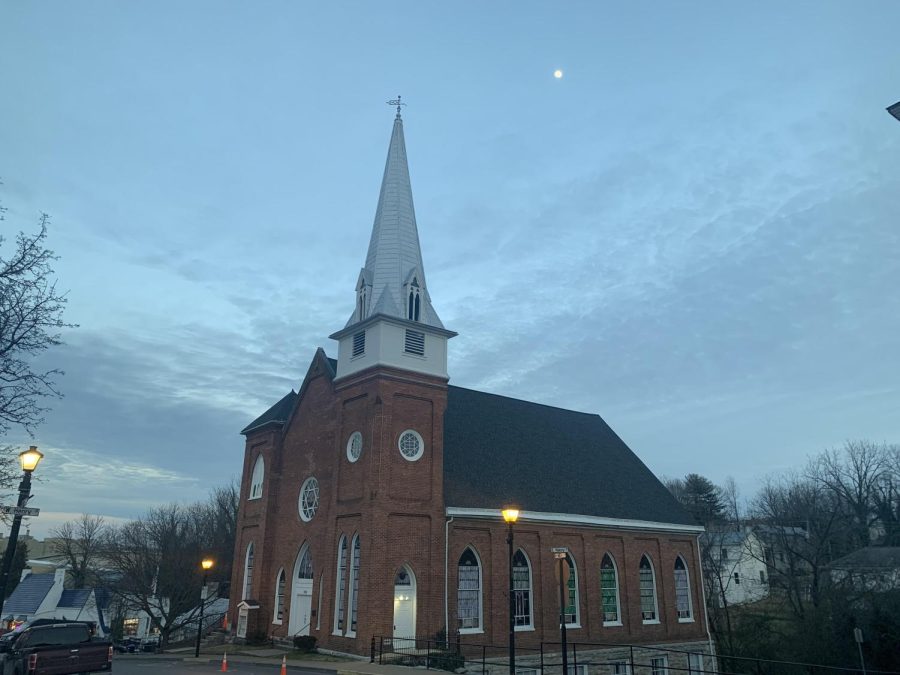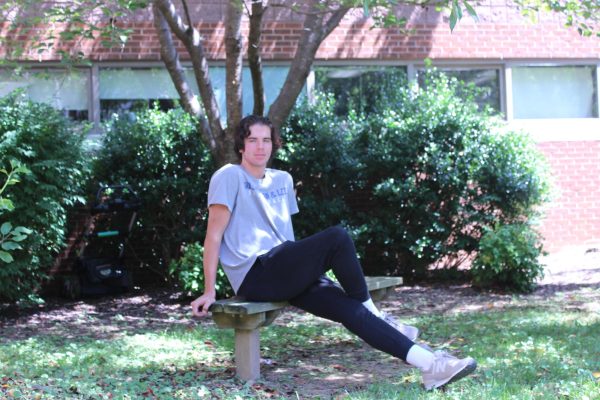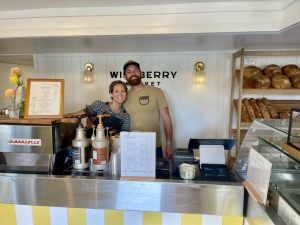Exploring Black History Roots in Lexington
First Baptist Church Of Lexington with stained glass.
February 8, 2023
On the final days of VMI finishing up their brand-new aquatic center, landmark signs were placed that recognized the Knights of Pythias stone-building and other historical features of Lexington that are no longer in existence. The history behind this goes way back.
After the Civil War, many freedmen sought to find land so they could raise a family and live as they pleased. It came to be that Lexington was this safe haven. Freedmen came into this city and settled on the empty land of Diamond and Green Hill along with Mudtown(area behind the hospital).
In the following years, Black-owned businesses grew with their population as third of the entire city. Tourist homes, restaurants, taverns, and grocery stores were raised up from the ground, and even, the Green Book included a few of these for weary travelers. Specifically, this book was curated for the safety of freedmen during travel.
A few notable establishments included The First Baptist Church of Lexington and Randolph Street United Methodist Church, Lexington Colored Grade School, and Lylburn Downing School, Knights of Pythias Hall, Walker and Woods Brothers Store, and the Blandome House.
Randolph United Methodist was founded by white Methodists, but over the time, they separated with the Black members. Eventually, the Methodist church was recognized by their nationality and the First Baptist Church was constructed near all of the Black-owned businesses. To this day, there is a continued attendance at the church with a lot of memorabilia of Black history throughout.
Secondly, Lexington Colored School allowed the children of former slaves to gain an education until the 1920s. Soon after, Lylburn Downing School was founded to provide further knowledge. However, these two schools did not provide a higher education past middle school, so people found themselves moving to learn more.
Furthermore, the Odd Fellows or the African American Grand United Order of Odd Fellows and the Elks Lodge managed to scrounge up money to support local Black-owned businesses. Odd Fellows met at the Knights of Pythias Hall, still maintained but renovated. Duke Ellington once performed in their dance room.
Also, in the same building of Macado’s, the Walker and Wood Brothers Meat Market resided and was the first butchery in Lexington in 1911. The owner by the name of Harry Walker, a renown and prominent African American businessman in Lexington, had a contract with VMI in the terms of his property. Also, Walker owned a farm in the same place as Sheetz is currently hence why the street nearby is named after him.
On top of that, the Blandome House was purchased in 1917 and was used as a vacation spot for Black visitors and tourists with a spacious lawn for guests. Its property resides on Tucker Street, behind the Baptist church, still, to this day. The Rose Inn and the Franklin Tourist Home and the J.M. Wood Tourist Home, too, provided rest and recovery for Black travelers during the Jim Crow Era. This area is now taken over by the Corps Physical Training Facility.
Diamond Hill resident, William Donald Dock Jr., shares his perspective at Black-owned businesses in Lexington for the years he lived here instead of internationally with the military.
“My father, he owned the business right there where Macado’s is and it used to be called the White Column Inn. And before that, his uncle owned a business across the street from there. Right at Carruthers was a little store owned by Sam Siefers and all the kids who went to Lylburn Downing used to walk down to the store,” said Dock.
Despite Black fraternal organizations and the population supporting Black-owned businesses during a harsh time of discrimination and discouragement, the businesses fell to their feet over time as VMI began to purchase such establishments’ land and property. The only remnants of this history are a few old-buildings and historic signs.
Much of Lexington’s population is uninformed of our history and roots. Exploring into the why’s of street names, locations, and buildings is inherently a civic responsibility. Fortunately, there are lessons served at LDMS or Waddell to educate children about the past. More historical information can be found at rockbridgehistory.org.








